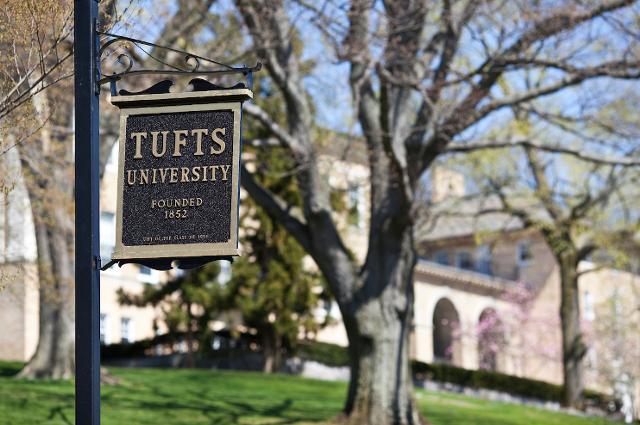Tufts Physics Researchers Demonstrate Spontaneous Topography in a Newtonian Fluid

When you fill a glass with water, the interface with air is perfectly flat, except around the boundary where a meniscus forms due to the water wetting the glass. Tufts Physics faculty member Timothy J. Atherton together with Andrew J. Ferris and Charles Rosenblatt of Case Western Reserve University proposed and demonstrated a new mechanism to create a fluid/air interface that is not flat. Rather, the free fluid surface possesses an equilibrium topography, the size and shape of which they controlled from elsewhere in the fluid. To accomplish this feat they patterned a surface on the opposite side of a thin nematic liquid crystal film, resulting in a controlled alignment of the molecules throughout the film. Using this approach, they demonstrated experimentally and theoretically that such a pattern can result in a predetermined “bumpy” surface at the top of the fluid film, i.e., at the air interface. This is an example of “action at a distance”, where the physics at one location can alter some remote behavior. A rough analogy might be filling a pool with a liquid and having the bottom of the pool’s shape be reflected in the top surface—something that we don’t experience in everyday life! The effect, though very small, may be key to creating responsive and adaptive devices that can respond to an external stimulus, and ultimately enable the creating of shapeshifters (think Mystique from X-Men). The work was published in Physical Review Letters [126, 057803 (2021)], and was selected by the journal’s editors for special attention by the physics community.